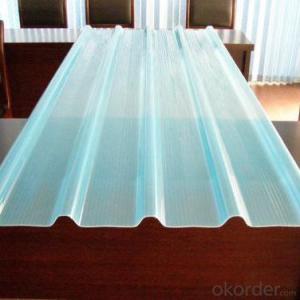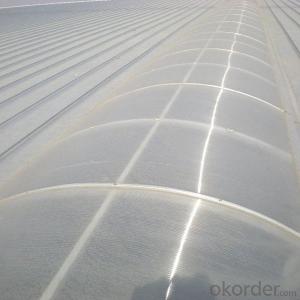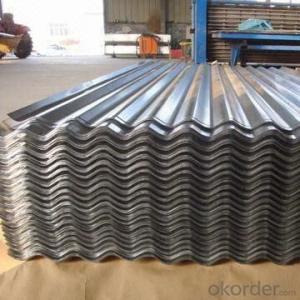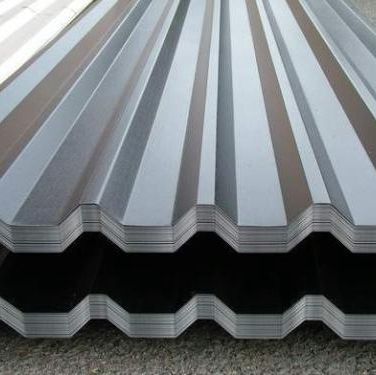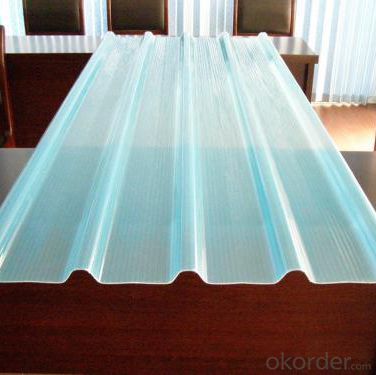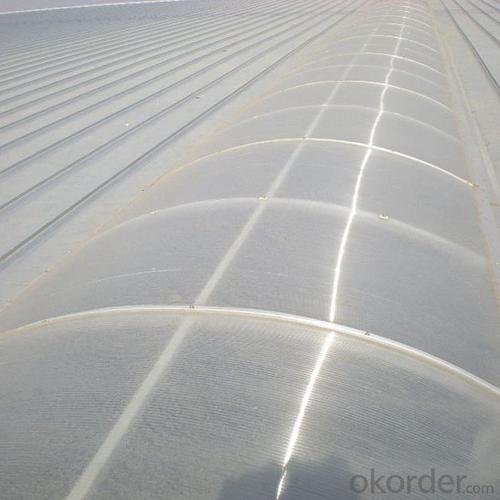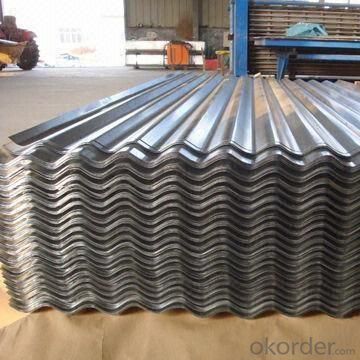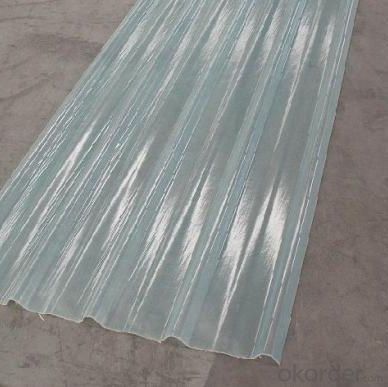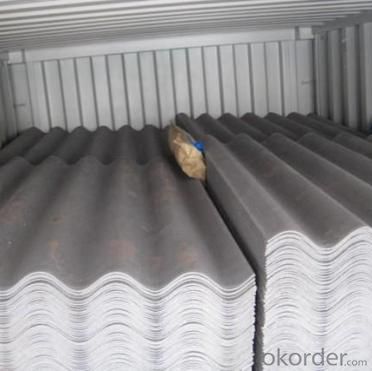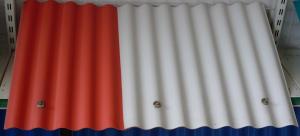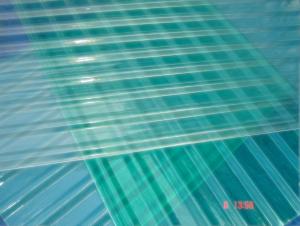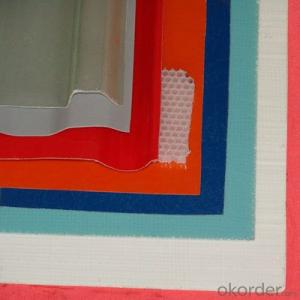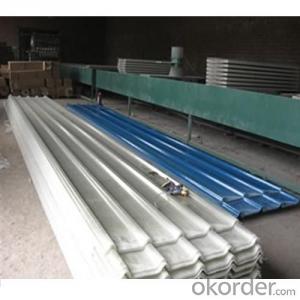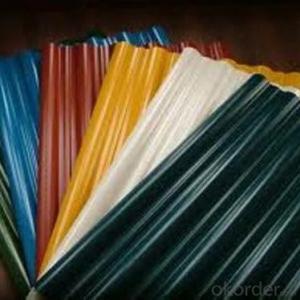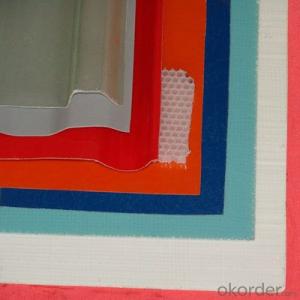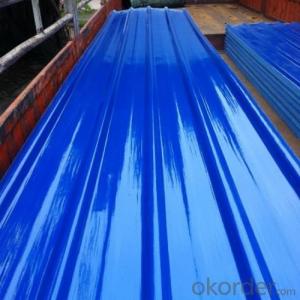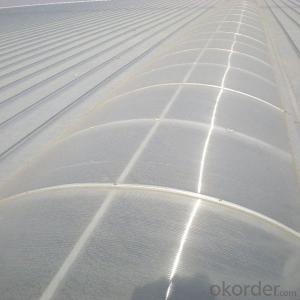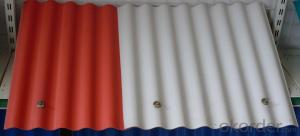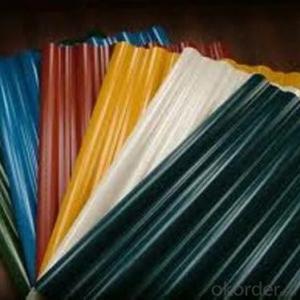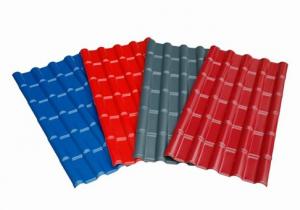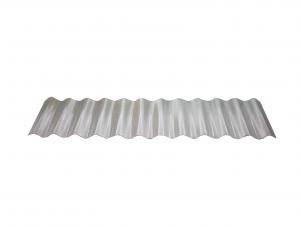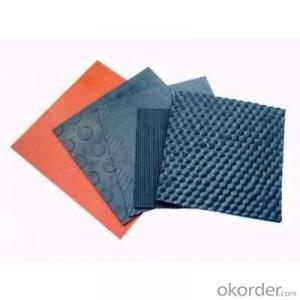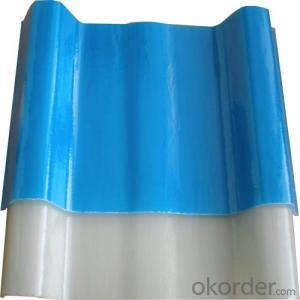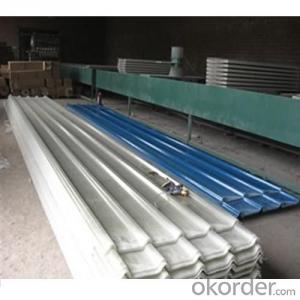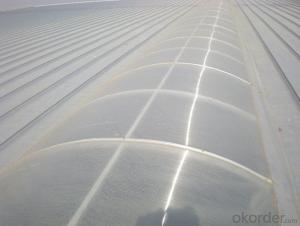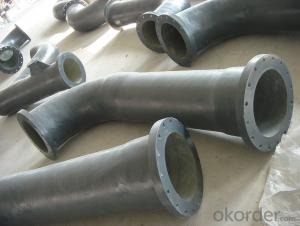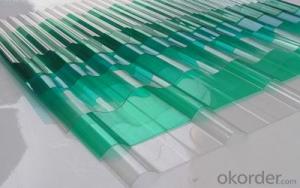Corrugated Plastic Roofing Sheet, Fiber FRP Transparent Roof Pane with High Quality On Sales
- Loading Port:
- Tianjin
- Payment Terms:
- TT OR LC
- Min Order Qty:
- 20 m
- Supply Capability:
- 50000 m/month
OKorder Service Pledge
OKorder Financial Service
You Might Also Like
Specification
PRODUCT DESCRIPTION
FRP Roofing Sheet are widely used in the field of industrial plants, warehouses, greenhouses, stations, docks, airports, sports buildings, commercial buildings, steel structures and other lighting areas. FRP is glass fiber and one or several thermosetting or thermoplastic resin composite material, such as phenolic resin, epoxy resin, polyester resin, polyimide resin. Glass fiber reinforced glass fiber that is the early 20th century, the development of a new composite material, it has a light weight, high strength, corrosion, insulation, insulation, noise and many other advantages.
FEATURES
1. Weatherability: In the temperature range of -40 ℃ - 120 ℃ to maintain stable performance;
2. Low thermal conductivity & good insulation performance;
3. Non-toxic, non-asbestos, etc., in line with world health standards;
4. No moss & prevent microbial growth;
5. High impact and resistant to strong wind;
6. Safe and reliable, Not combustion-supporting in open fire;
7. Corrosion resistance, suitable for chemical workshop roof, such as fertilizer plants, electroplating factory
SPECIFICATIONS
Item | Description | ||
Material | FRP, ASA, PVC | ||
Thickness | 1.0mm - 3.0mm | ||
Color | Clear, milk white, blue, green, red | ||
Type | 475, 666, 760, 820, 840, 860, 900, 950, 980, 1050, can be customized | ||
Shelf life | 15 years | ||
PICTURES
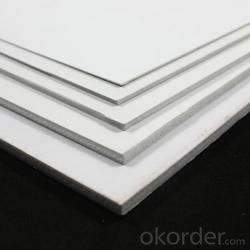
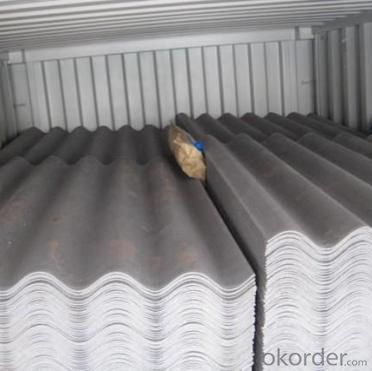
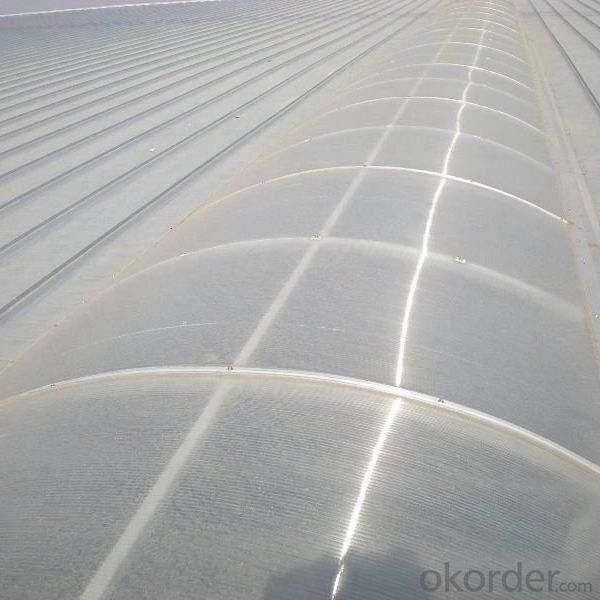
- Q: Do FRP roofing panels require any specific safety measures during installation?
- During the installation of FRP roofing panels, specific safety measures are required. Take note of the following important safety precautions: 1. Personal Protective Equipment (PPE): It is necessary for installers to wear appropriate safety gear such as safety glasses, gloves, and non-slip footwear. This will safeguard them against potential hazards like sharp edges or falling debris. 2. Ensuring a Safe Work Environment: Prior to commencing the installation, make sure the work area is free from any obstructions or tripping hazards. Maintaining good housekeeping practices is crucial to minimize the risk of accidents. 3. Fall Protection: If the installation involves working at heights, implement fall protection measures such as harnesses, guardrails, or safety nets. Installers should receive proper training on the use of fall protection equipment. 4. Proper Lifting Techniques: FRP roofing panels can be heavy, so it is important to use proper lifting techniques to prevent strains or injuries. Depending on the weight and size of the panels, team lifting or mechanical lifting devices may be necessary. 5. Power and Tool Safety: If power tools are used during installation, ensure that they are operated according to the manufacturer's instructions and only by trained personnel. Adhere to electrical safety precautions such as using grounded tools and avoiding wet conditions. 6. Weather Conditions: Weather conditions can affect the safety of the installation, particularly when working at heights. Installers should be mindful of potential hazards like strong winds, rain, or lightning and take appropriate precautions, including rescheduling the work if necessary. 7. Training and Supervision: Proper training in the installation techniques and safety measures specific to FRP roofing panels is essential for all installers. Regular supervision and communication regarding safety practices can prevent accidents and maintain a safe working environment. By adhering to these safety measures, the risk of accidents or injuries during the installation of FRP roofing panels can be significantly reduced, ensuring the safety of the installers and the overall success of the project.
- Q: Can FRP roofing panels be installed over existing roofs?
- In certain cases, it is feasible to install FRP roofing panels over pre-existing roofs. However, there are several factors that need careful consideration prior to proceeding with the installation. First and foremost, the condition of the current roof must be evaluated. If the roof is extensively damaged or has structural problems, it may not be suitable for the installation of FRP panels. It is advisable to engage the services of a professional roofer to conduct a thorough inspection and determine the roof's suitability for the installation. Secondly, the weight of the FRP panels should be taken into account. If the existing roof is incapable of supporting the additional weight, it could result in further damage or even collapse. Once again, it is essential to consult with a professional to assess the load-bearing capacity of the current roof. Furthermore, it is imperative to check the compatibility of the FRP panels with the existing roof. Different roofing materials may have varying rates of expansion and contraction, which could cause problems if the panels are not installed correctly or if they do not align properly with the existing roof structure. Lastly, local building codes and regulations must be considered. Certain jurisdictions may have specific requirements or limitations when it comes to installing new roofing materials over existing roofs. Complying with these regulations is crucial to ensure the safety and integrity of the roof. In conclusion, while the installation of FRP roofing panels over existing roofs is possible, it is vital to assess the condition of the current roof, evaluate its weight-bearing capacity, check compatibility, and adhere to local regulations. Seeking the guidance of a professional roofer is highly recommended to achieve a successful and secure installation.
- Q: Are FRP roofing panels resistant to cracking or splitting?
- Yes, FRP (Fiberglass Reinforced Plastic) roofing panels are highly resistant to cracking or splitting due to their durable composition and strength.
- Q: Can FRP roofing panels be installed on both residential and commercial balconies?
- FRP roofing panels are suitable for installation on both residential and commercial balconies. These panels, made of Fiberglass Reinforced Plastic, are a versatile roofing material that provides numerous advantages such as durability, resistance to weather, and easy installation. Their lightweight nature and ability to withstand harsh weather conditions make them a popular choice for balconies in both residential and commercial settings. Moreover, FRP panels come in various colors and designs, offering customization options to suit the aesthetic preferences of any building. In conclusion, FRP roofing panels are an excellent option for balconies in both residential and commercial structures.
- Q: Can FRP roofing panels be used for carports or garages?
- Yes, FRP roofing panels can be used for carports or garages. FRP (Fiberglass Reinforced Plastic) roofing panels are lightweight, durable, and weather-resistant, making them suitable for use in outdoor structures like carports and garages. They provide excellent protection against UV rays, rain, and other environmental factors, ensuring the safety and longevity of the carport or garage.
- Q: Are FRP roofing panels resistant to termites or other pests?
- FRP (Fiberglass Reinforced Plastic) roofing panels are generally not considered resistant to termites or other pests. While FRP materials are known for their durability and resistance to various elements, they are still susceptible to termite infestation or damage caused by other pests. Termites, in particular, are known to consume and tunnel through wood and cellulose-based materials, which FRP panels do not consist of. However, termites can still cause damage to the wooden structures surrounding the FRP panels, potentially compromising the integrity of the roofing system. It is recommended to regularly inspect and maintain the area surrounding FRP roofing panels to prevent any potential pest infestations and address any issues promptly.
- Q: Are FRP roofing panels easy to repair?
- Yes, FRP (Fiberglass Reinforced Plastic) roofing panels are relatively easy to repair. The lightweight and durable nature of FRP panels make them simple to handle and work with during the repair process. Additionally, FRP panels are resistant to corrosion, mold, and mildew, which reduces the likelihood of extensive damage requiring repair. The repair process for FRP roofing panels typically involves cleaning the damaged area, removing any debris or loose material, and applying a suitable patching material or adhesive to seal the damaged section. This can be done by a homeowner or a professional contractor, depending on the extent of the damage and the individual's level of expertise. It is worth noting that the ease of repair may vary depending on the specific type and brand of FRP panel used. Some manufacturers may offer specific repair kits or instructions for their products, which can further simplify the repair process. Overall, with proper maintenance and timely repairs, FRP roofing panels can provide long-lasting protection for a wide range of applications.
- Q: Are FRP roofing panels resistant to extreme weather conditions?
- Yes, FRP (Fiberglass Reinforced Plastic) roofing panels are highly resistant to extreme weather conditions. FRP panels are designed to be durable and strong, making them well-suited for withstanding harsh weather elements such as high winds, heavy rain, hail, snow, and extreme temperatures. FRP panels are made from a combination of strong fiberglass strands and a reinforced plastic matrix, which gives them excellent structural integrity. This composition enables them to resist cracking, warping, or breaking under extreme weather conditions. Moreover, FRP panels are lightweight yet highly resistant, making them less susceptible to damage from wind uplift or impact from falling debris during storms. Additionally, FRP panels have excellent resistance to UV rays and are designed to be long-lasting. They are typically coated with a high-quality UV-resistant gel coat, which protects the material from the damaging effects of the sun, such as fading or degradation. This UV resistance ensures that FRP roofing panels will maintain their strength and appearance even in areas with intense sunlight or extreme heat. Furthermore, FRP panels have excellent water resistance properties. They are inherently waterproof and do not absorb water, which prevents issues such as rotting, mold, or mildew growth. This feature is especially beneficial in areas prone to heavy rain or snowfall, as FRP panels will not be damaged by water infiltration or expansion due to freezing temperatures. In summary, FRP roofing panels are indeed resistant to extreme weather conditions. Their durable and strong composition, combined with UV resistance and water resistance properties, make them an excellent choice for areas with harsh climates or unpredictable weather patterns.
- Q: Are FRP roofing panels suitable for areas with heavy snowfall?
- Yes, FRP (Fiberglass Reinforced Plastic) roofing panels are suitable for areas with heavy snowfall. FRP panels are known for their high strength and durability, making them capable of withstanding the weight and pressure of snow accumulation. Additionally, FRP panels have excellent thermal insulation properties, which can help prevent snow from melting and refreezing, reducing the risk of ice dam formation. However, it is essential to ensure proper installation and reinforcement to handle the specific snow load requirements of the area.
- Q: Can FRP roofing panels be cut to size?
- Yes, FRP (Fiberglass Reinforced Plastic) roofing panels can be cut to size.
Send your message to us
Corrugated Plastic Roofing Sheet, Fiber FRP Transparent Roof Pane with High Quality On Sales
- Loading Port:
- Tianjin
- Payment Terms:
- TT OR LC
- Min Order Qty:
- 20 m
- Supply Capability:
- 50000 m/month
OKorder Service Pledge
OKorder Financial Service
Similar products
Hot products
Hot Searches
Related keywords

